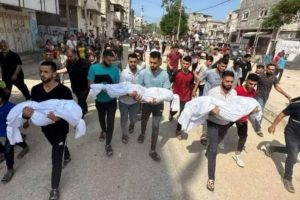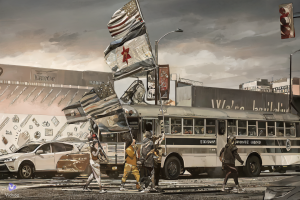The humanitarian situation in Afghanistan is in a “downward spiral,” according to the head of the International Committee of the Red Cross. Despite the worsening situation, attention paid to Afghanistan is inversely proportional to the humanitarian situation in the country.
“There are more displaced people, more war-wounded and more disabled people. Humanitarian concerns are growing, yet international attention is dwindling. It seems that the more the Afghan people suffer, the less attention there is on them,” said Peter Maurer, president of the International Committee of the Red Cross (ICRC), in a statement.
The more than 11,000 civilian casualties in Afghanistan during 2015 marked a 4 percent increase from the record high set in the previous year. Attacks haven been characterized as violating international laws, by the U.N. High Commissioner for Human Rights. U.N. staff on the ground recently reported that there is little accountability for the people carrying out attacks in Afghanistan – most of which are carried out by non-state armed groups.
Attacks against health facilities and personnel have gone up by 50% in teh last year, he highlighted.
“Every bombed out hospital and every doctor or nurse who is forced to flee, means thousands of people cannot get immediate medical treatment when necessary,” said Maurer. “International humanitarian law clearly binds all parties to the conflict to respect and protect medical missions.”
Afghans are the second largest group arriving in Europe today which shows that the chronic violence and insecurity, and the permanent unpredictability of the war, has pushed people beyond their limits, said Mr Maurer.
Roughly 2.5 million Afghanis are living as refugees, many of which resulting from the onset of the U.S. invasion 14 years ago. Millions of refugees returned home since 2005, but increased insecurity saw the rate of return slow in the past few years. And there are more than a half million people displaced inside the country, another effect of the worsening situation.
During his visit, Mr Maurer held talks with the President of Afghanistan, the Chief Executive, regional authorities as well as international organisations. He also met representatives of armed opposition groups, as well as civilians who have been displaced and detainees.
“We have increased our budget for Afghanistan for 2016, recognising the scale of the problem. We will explore the possibilities of further expanding our activities, including the evacuation of wounded people,” said Mr Maurer.
Before the recent upsurge in violence in Syria and Iraq, the United Nations High Commissioner for Refugees (UNHCR) reported that Afghanistan remained the world’s top producer of refugees for the 32nd year in a row. As of July 2014, the UNHCR estimated there are approximately 700,000 internally displaced persons (IDPs) in Afghanistan. Violence has been the major factor in involuntary population movements among Afghans.
The vast majority of Afghan refugees reside in Pakistan and Iran, where they face an uncertain political situation, according to Human Rights Watch (HRW).






